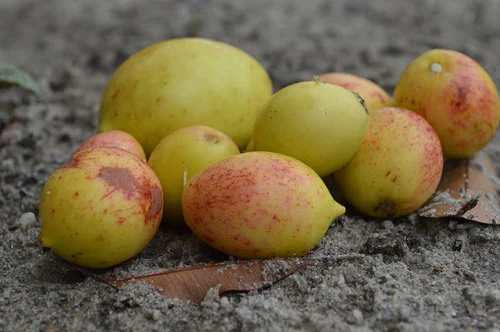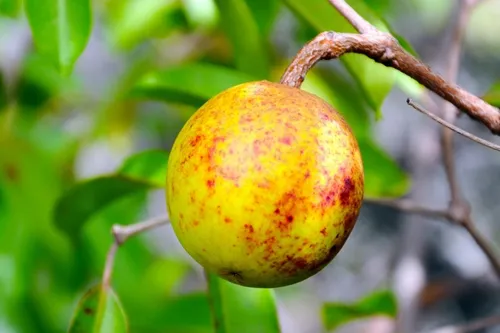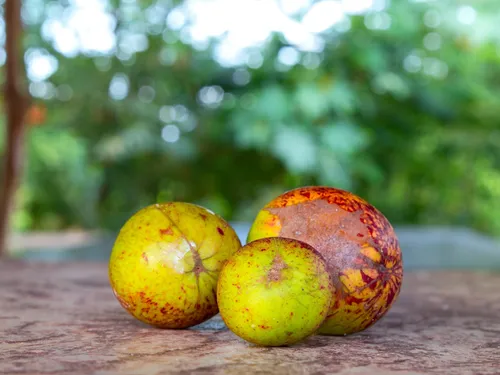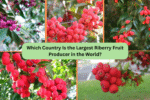The mangaba fruit, scientifically known as Hancornia speciosa, is a tropical delicacy native to South America. Celebrated for its sweet, fragrant flesh and health-boosting properties, mangaba has played an important role in traditional medicine and regional cuisines for centuries. In this comprehensive article, we’ll explore the origins, cultural significance, culinary uses, and reveal which country leads the world in mangaba fruit production.
What Is Mangaba Fruit?

Mangaba is a small, round fruit with a thin, yellowish to reddish skin and soft, creamy pulp. The flavor is sweet, tangy, and aromatic, making it highly popular for juices, jams, ice creams, and desserts. The fruit grows on the mangabeira tree, a medium-sized tree found in tropical and semi-arid climates.
Mangaba is rich in vitamins and minerals, particularly Vitamin C, calcium, and iron, and has been traditionally used for its medicinal benefits.
Cultural and Historical Significance
The mangaba tree holds a revered place in the indigenous and rural communities of Brazil. The name “mangaba” originates from the Tupi-Guarani language, meaning “good fruit to eat”. Traditionally, the fruit was harvested by hand from wild trees and enjoyed fresh or turned into preserves.
The Largest Mangaba Producer in the World: Brazil

Brazil is the largest producer of mangaba fruit in the world.
Why Brazil Dominates Mangaba Production
1. Native Habitat:
Mangaba trees are native to Brazil’s diverse biomes, including the Cerrado, Caatinga, and Atlantic Forest regions.
2. Favorable Climate:
The tropical and semi-arid climate of states like Sergipe, Bahia, Pernambuco, Alagoas, Paraíba, and Goiás create ideal conditions for mangaba cultivation.
3. Deep-Rooted Cultural Integration:
Mangaba holds cultural and economic importance in Brazil, especially in Sergipe, where it’s a symbol of regional identity.
4. Culinary Demand:
The fruit is a staple ingredient in juices, sweets, and desserts throughout Brazil, with growing interest in its commercial cultivation.
Other Mangaba Producing Countries
While Brazil is the dominant producer, other South American countries also cultivate mangaba in smaller quantities:
- Bolivia
- Paraguay
- Peru
- Colombia
However, these nations primarily grow mangaba for local consumption.
Nutritional and Medicinal Benefits

Mangaba is prized not only for its taste but also for its health benefits:
- Rich in Vitamin C: Boosts immunity and skin health.
- Source of Calcium and Iron: Supports bone strength and prevents anemia.
- Antioxidant Properties: Protects against free radicals.
- Digestive Aid: Traditionally used to ease gastrointestinal issues.
- Cardiovascular Benefits: May help regulate blood pressure and cholesterol.
Culinary Uses
- Juices and Smoothies: Popular for its refreshing flavor.
- Ice Cream and Sorbets: A beloved tropical dessert.
- Jams and Preserves: Made from ripe mangaba pulp.
- Traditional Sweets: Regional delicacies like mangaba compote.
- Fresh Consumption: Eaten as a juicy, fragrant fruit.
Economic Importance in Brazil

Mangaba harvesting and production support local economies in Brazil:
- Employment for Rural Communities: Harvesters, processors, and vendors.
- Cottage Industries: Small-scale production of jams, juices, and desserts.
- Tourism and Festivals: Annual events celebrate mangaba season.
- Market Growth: Rising demand for exotic fruit products domestically and abroad.
Challenges in Mangaba Production
- Overharvesting of Wild Trees: Threatens natural mangabeira populations.
- Habitat Loss: Deforestation impacts native groves.
- Limited Commercial Plantations: Most production still relies on wild harvest.
- Seasonal Availability: Short harvesting window.
Future Prospects and Industry Trends

With global interest in tropical superfruits and sustainable, locally sourced products, mangaba production is poised for growth:
- Agroforestry Projects: Integrating mangaba into sustainable farming systems.
- Organic Cultivation: Expanding organic and pesticide-free mangaba farms.
- Export Potential: Growing interest in international gourmet markets.
- Value-Added Products: Mangaba-based beverages, skincare, and health supplements.
Conservation and Sustainable Practices
To protect mangaba resources:
- Reforestation Programs: Planting mangabeira trees in deforested areas.
- Community-Based Management: Empowering local harvesters with sustainable practices.
- Research and Development: Breeding high-yield, disease-resistant varieties.
- Legal Protection: Recognizing traditional harvesting rights.
Conclusion
Brazil’s unique climate, cultural heritage, and culinary traditions have established it as the world’s largest producer of mangaba fruit. From the beaches of Sergipe to the markets of Bahia, mangaba remains a cherished tropical treasure.
While other South American countries contribute modestly to global production, none rival Brazil’s dominance in volume, quality, and cultural importance. As international demand for exotic, healthful fruits continues to rise, Brazil’s mangaba industry holds significant potential for sustainable development, economic empowerment, and environmental conservation.





Leave A Comment